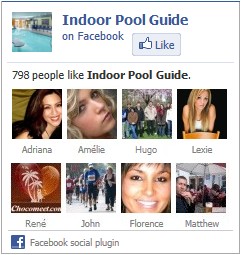
Chlorine has been somewhat of a wonder drug for pool and spa environments. It has the power to kill bacteria and algae — and works extremely well in aqueous environments.
Chlorine is not invincible, however. Like most chemicals, it has a threshold — a point at which it has used up all its sanitizing power and can no longer protect your pool and spa water.
Chlorine levels are also heavily influenced by evaporation, splash out and destructive UV rays, not to mention a low pH. (You’ll read about this last factor in more detail below.)
Once added to the water, the « free available » chlorine — that portion of the chlorine with the killing power — will sanitize and oxidize the water by attacking undesirables such as bacteria, algae, sweat and oils from your skin, residual soaps, shampoos, perfume and, yes, urine.
As it uses up its killing potential, the chlorine becomes ineffective or it combines with the contaminants and remains in the pool and spa water in the form of chloramines.
FYI: It is the chloramines in your pool and spa water — not too much « good » chlorine – – that causes a chlorine-like odor and can irritate your eyes and skin.
Indeed, when a pool or spa exudes a chlorine odor and you begin to hear complaints of skin and eye irritation, that is a loud warning that there is not enough chlorine in the water. If this is the case, you should test the water and add the appropriate amounts of sanitizer as soon as possible. (Check out the Testing Your Water section to learn more about this process.)
The recommended level of free available chlorine to keep in your pool is between 1.0 and 3.0 ppm or parts per million. For spas, the recommended level of free available chlorine is between 1.50 and 3.0 ppm.
Another note: We’ll address how you measure chlorine and other water-balance levels in another section.
Chlorine is extremely susceptible to sunlight and needs to be regularly monitored. But just as we use sunscreen to protect our skin from the sun, chlorine uses a sunscreen of cyanuric acid. Used this way, cyanuric acid is also commonly called a stabilizer or conditioner. With its help, chlorine retains its effectiveness. Without going into the chemical whys and wherefores, know that acid works to help keep a fairly consistent chlorine level (a residual) in the water.
Some chlorine-based sanitizers are sold with a dose of cyanuric acid already mixed into the product. One such product is trichlor tablets, (trichloro-s-triazinetri) are which are usually placed in a floater, chemical feeder or in the skimmer basket. Another commonly used product is sodium dichlor,(dichloro-striazinetrione) which is a granular substance usually dispersed directly into the pool or spa water, or added via the skimmer.

